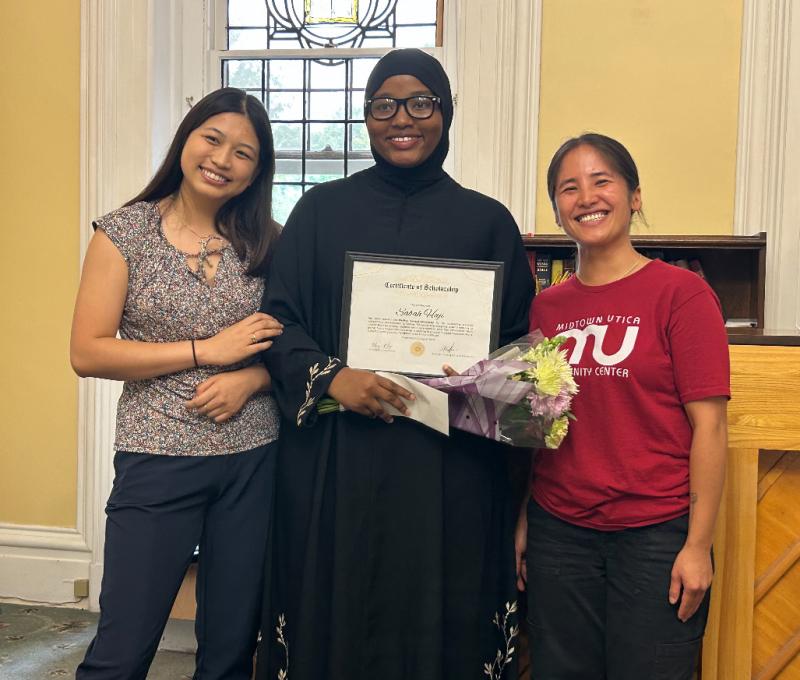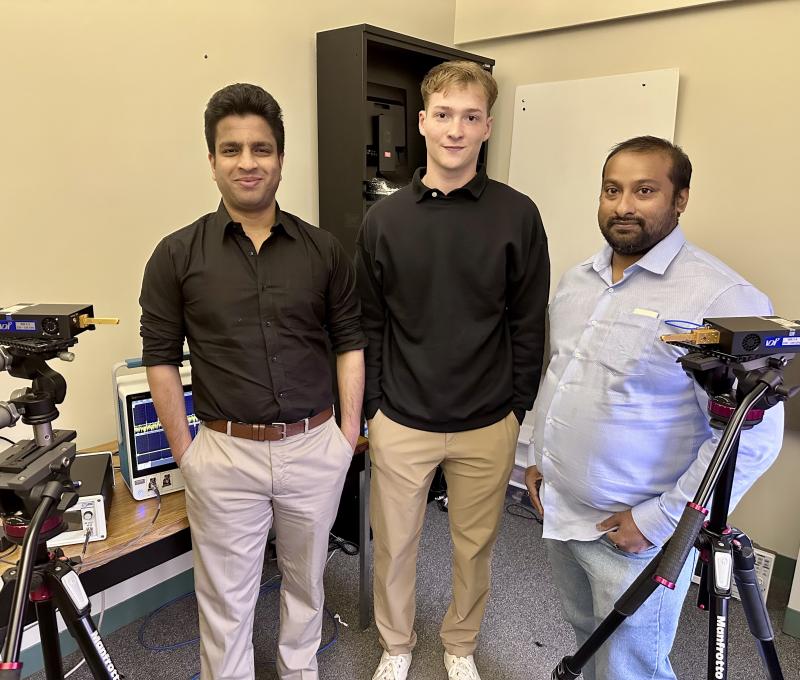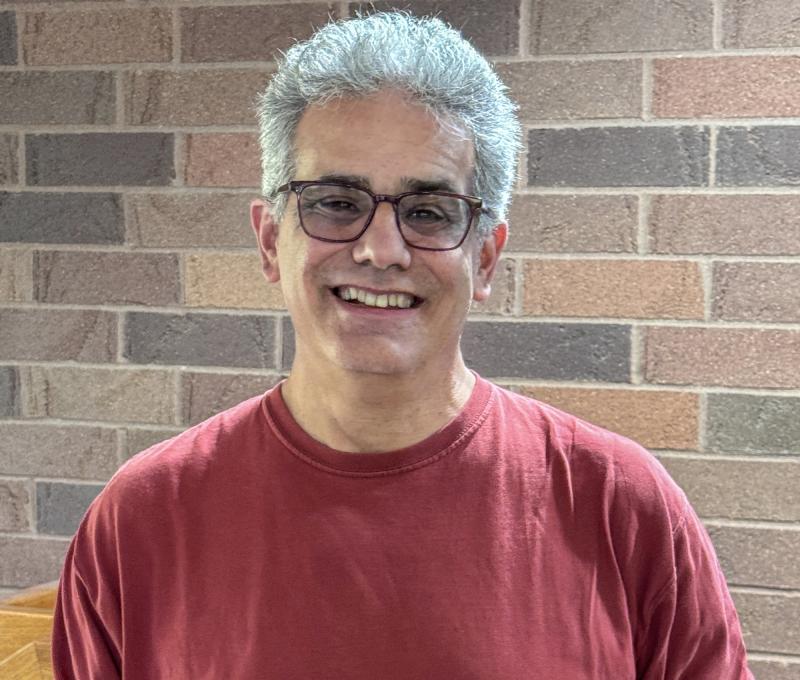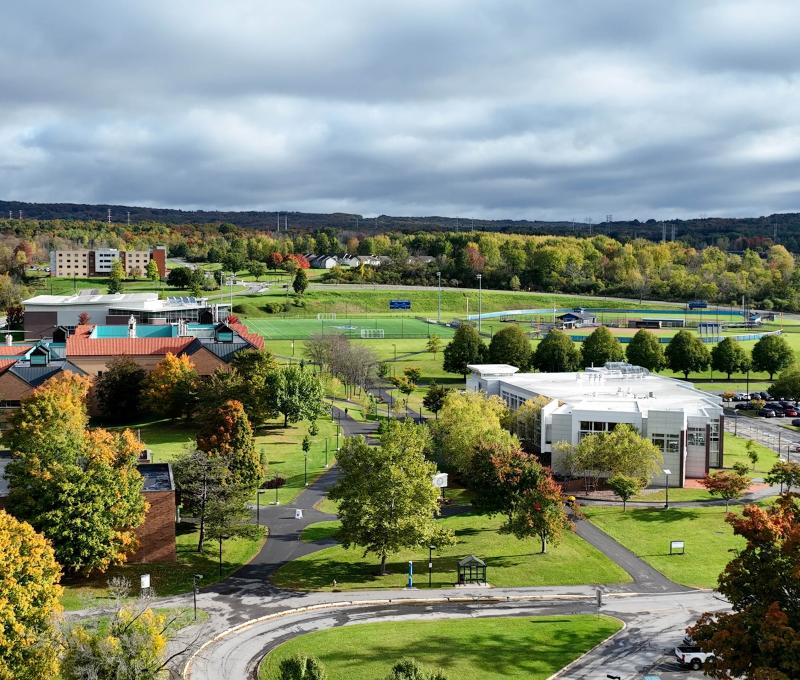News Release: SUNY Poly Professor Helps Identify New Lemur Species

For Release: Immediate – January 17, 2018
Contact: Dave Dellecese, Public Affairs Specialist
(315) 792-7307 | ddellecese@sunypoly.edu
SUNY Poly Professor Helps Identify New Lemur Species
Assistant Professor of Biology Dr. Adam McLain among six person scientific team
UTICA – A new lemur species has been discovered in Madagascar, thanks to the efforts of a team of scientists that included SUNY Poly Assistant Professor of Biology Dr. Adam McLain.
McLain, working with colleagues from the Henry Doorly Zoo and Aquarium in Omaha, the Madagascar Biodiversity Partnership, and Conservation International have identified a new species of lemur, the 24th new lemur species discovered by scientists at the Henry Doorly Zoo.
“We at SUNY Poly are incredibly proud to note the significant accomplishments of our faculty, who have incredible knowledge and expertise and play pivotal roles in research around the globe,” said Dr. Bahgat Sammakia, Interim President of SUNY Polytechnic Institute. “The work of Dr. McLain and his colleagues is helping the world understand just how many primates inhabit places like Madagascar, as it highlights the importance of conservation efforts due to an increasing loss of habitat, all of which is testimony to the critical nature of SUNY Poly’s research.”
This new species is being called Groves’ dwarf lemur, named for the late British-American anthropologist Dr. Colin Groves. Groves was the co-discoverer of the hominid species Homo ergaster and author of Primate Taxonomy, considered the fundamental book in the field. Groves had collaborated with scientists at the Henry Doorly Zoo on several projects throughout the years before he passed away in late December 2017, knowing that the lemur would be named after him.
“There are many times when people think of SUNY Poly as only a tech school, completely unaware of the amazing breadth of expertise in the sciences," said Dr. William Durgin, SUNY Poly Provost. "Dr. McLain’s recent work and the discovery and naming of this new species of lemur is a perfect example of the impressive expertise of our SUNY Poly faculty that makes an impact worldwide.”
Found in the mountainous rainforests and grasslands of southeastern Madagascar, in and around the Malagasy National Parks of Ranomafana and Andringitra, the new species of lemur is nocturnal, smaller than a squirrel in size, with reddish-brown fur on its back, limbs and head, and brownish-black rings around its eyes. An omnivore, the Groves’ dwarf lemur feeds mainly on fruit. Like all dwarf lemurs, it undergoes torpor, a formal seasonal hibernation in the resource-poor Southern Hemisphere winter. During torpor, the animals survive primarily off of fat reserves stored in their tail.
“This achievement by Dr. McLain and his team shows their dedication to the timeless values of exploration and discovery,” said Dr. Andrew Russell, Dean of the SUNY Poly College of Arts and Sciences. “Dr. McLain embodies the very best characteristics of our faculty at SUNY Poly—his work has an international impact, it's guided by a spirit of adventure and responsibility, and he brings this passion and experience into the classroom to benefit our students."
“We are thrilled to introduce this species to the world – another indicator of the remarkable biodiversity present in Madagascar that remains to be discovered,” said Dr. McLain. “Most of the more than 110 species of lemur currently recognized by science are endangered by human activity, many critically so.”
The findings were published in Primate Conservation, a journal published by the IUCN Species Survival Commission’s Primate Specialist Group.
####################
About SUNY Polytechnic Institute (SUNY Poly)
SUNY Poly is New York’s globally recognized, high-tech educational ecosystem. SUNY Poly offers undergraduate and graduate degrees in the emerging disciplines of nanoscience and nanoengineering, as well as cutting-edge nanobioscience and nanoeconomics programs at its Albany campus, and undergraduate and graduate degrees in technology, including engineering, cybersecurity, computer science, and the engineering technologies; professional studies, including business, communication, and nursing; and arts and sciences, including natural sciences, mathematics, humanities, and social sciences at its Utica/Rome campus; thriving athletic, recreational, and cultural programs, events, and activities complement the campus experience. As the world’s most advanced, university-driven research enterprise, SUNY Poly boasts billions of dollars in high-tech investments and hundreds of corporate partners since its inception. For information visit www.sunypoly.edu.








